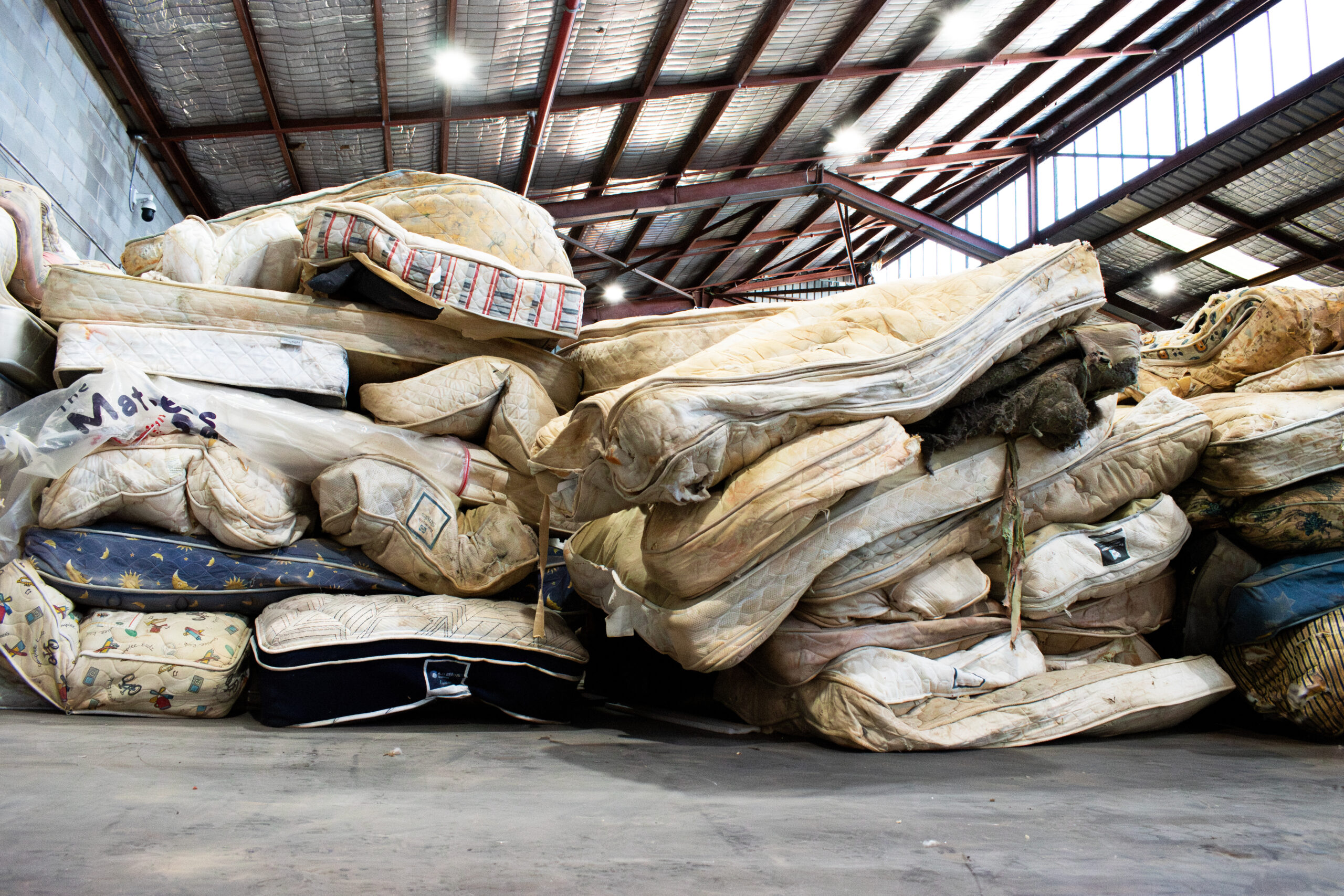Mattresses are bulky, complex products made from a mix of materials that don’t easily break down in landfills. Each year, millions of them are discarded, consuming valuable landfill space and contributing to environmental problems. Fortunately, mattress recycling offers a sustainable alternative. By carefully dismantling mattresses, recyclers can recover valuable materials that are repurposed into new products, reducing waste and conserving resources.
So, what exactly is recovered in mattress recycling—and why does it matter? Let’s break it down.
Steel Components
One of the most valuable materials inside a mattress is steel. Most mattresses contain 80–100 pounds of metal springs or coils.
- Recovery Process – The steel is extracted using magnets and then melted down in foundries.
- Reuse Applications – Recycled steel is used in construction, appliances, and new furniture.
- Environmental Benefit – Recycling steel saves up to 75% of the energy compared to producing new steel from raw ore.
This makes steel recovery a cornerstone of mattress recycling programs.
Foam and Padding
Mattresses often contain polyurethane foam, memory foam, or other padding layers.
- Recovery Process – The foam is shredded into smaller pieces.
- Reuse Applications – Repurposed into carpet underlay, insulation, or cushioning for furniture and athletic mats.
- Environmental Benefit – Prevents non-biodegradable foam from sitting in landfills for centuries.
Foam recycling helps keep valuable materials in circulation while reducing demand for petroleum-based products.
Wood Frames
Many mattresses include wood components in their frames.
- Recovery Process – Wooden pieces are separated during dismantling.
- Reuse Applications – Turned into mulch, wood chips, or biomass fuel.
- Environmental Benefit – Repurposing wood supports renewable energy efforts and reduces pressure on forests.
Textiles and Fibers
Mattresses are covered in fabrics such as cotton, polyester, or wool. Inside, they may also contain fiber batting.
- Recovery Process – Fabrics are cut away and sorted.
- Reuse Applications – Used in industrial textiles, padding, and sometimes even cleaning rags.
- Environmental Benefit – Reduces demand for virgin textiles, which are resource-intensive to produce.
Other Materials
Depending on the type of mattress, other recoverable materials may include:
- Latex – Reprocessed for carpet backing or new foam products.
- Felt – Recycled into industrial padding.
- Plastic – Repurposed into pellets for manufacturing new plastic goods.
This variety highlights how much of a mattress can be reused rather than wasted.
Why Recycling Beats Landfilling
Landfilling mattresses is inefficient and harmful. A single mattress can take up 40 cubic feet of landfill space and take decades to decompose. Recycling, on the other hand, can recover 80–90% of mattress materials, reducing environmental impact while supporting the circular economy.
Trusted Recycling Leaders
Not all recycling services are created equal, which is why it’s important to choose specialized providers. Many communities rely on organizations like Recyc-Matelas mattress recycling, which focus on carefully dismantling mattresses and ensuring materials are recovered and repurposed responsibly.
Final Thoughts
Mattress recycling is about more than waste diversion—it’s about resource recovery and sustainability. From steel and foam to wood and fabrics, most of a mattress can be recycled into new, useful products.
By choosing to recycle instead of landfill, you help conserve energy, reduce pollution, and support a circular economy. The next time you replace a mattress, remember: it’s not just an old bed—it’s a collection of valuable materials ready for a second life.

 How can you save money on moving & storage without sacrificing quality?
How can you save money on moving & storage without sacrificing quality?  OK.com Launches in US Market, Integrating AI Technology into Local Classifieds Experience
OK.com Launches in US Market, Integrating AI Technology into Local Classifieds Experience  Learn Everything About In-Ground vs. Above-Ground Pool Elimination
Learn Everything About In-Ground vs. Above-Ground Pool Elimination  The Smart Buyer’s Guide to Custom Canvas Prints in the UK
The Smart Buyer’s Guide to Custom Canvas Prints in the UK  Designing a Factory? Vastu Tips That Could Improve Energy Flow, Productivity & Profit
Designing a Factory? Vastu Tips That Could Improve Energy Flow, Productivity & Profit  How a General Contractor Manages Large Renovation Projects
How a General Contractor Manages Large Renovation Projects  Why Ongoing Support Is More Valuable Than a Low Initial Price When Installing Stairlifts In Scotland?
Why Ongoing Support Is More Valuable Than a Low Initial Price When Installing Stairlifts In Scotland?  How To Repair The Roof Penetration That Causes Vent Pipe Leaks
How To Repair The Roof Penetration That Causes Vent Pipe Leaks 